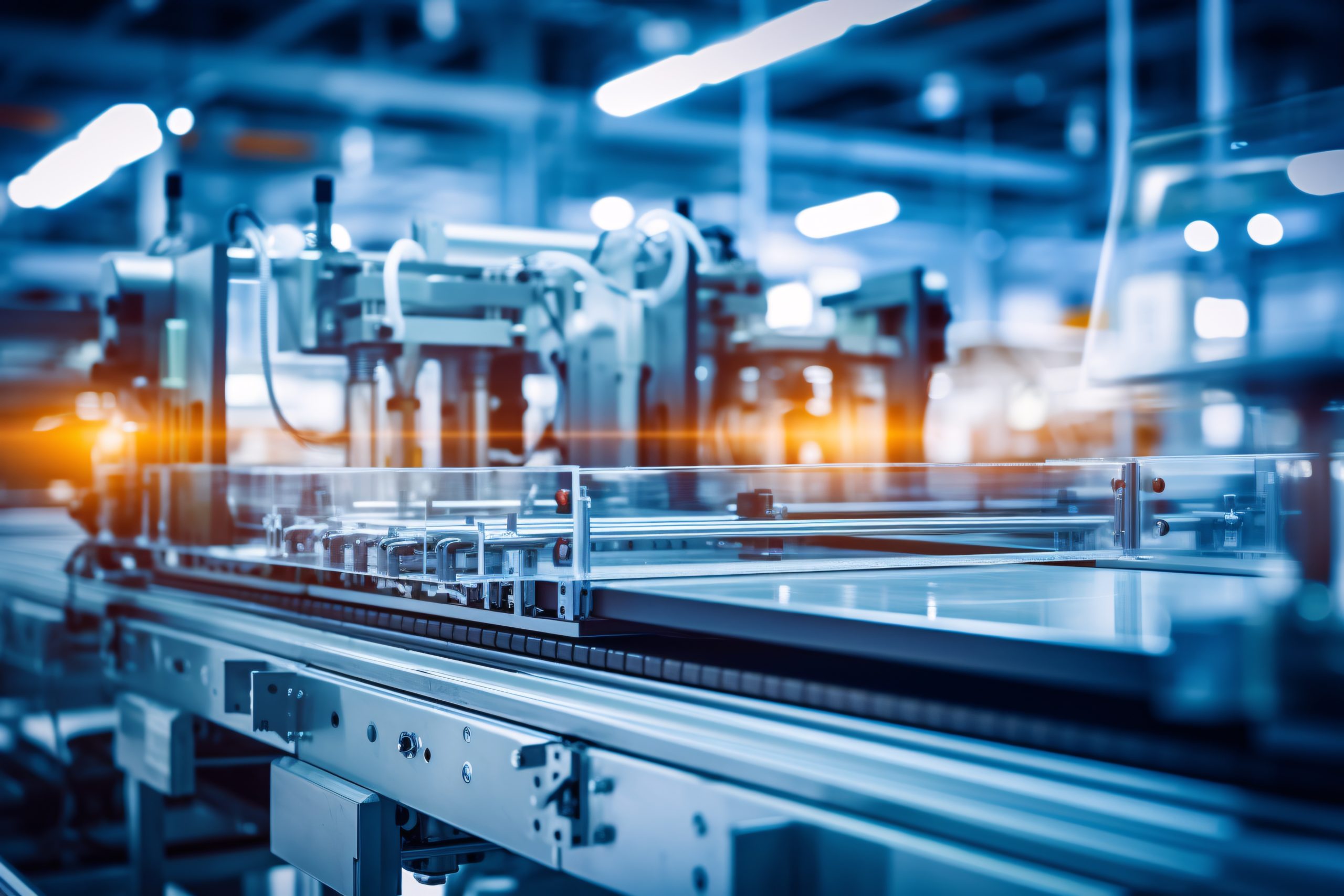If the glass industry can drastically reduce its carbon dioxide (CO2) emissions, then it can be done anywhere. Sounds like a bold claim. However, it is not completely outlandish. ‘The learning effects we have in our project are applicable to many other industries. And hydrogen plays an important role in this,’ says Hendrik Schricker from the Chair of Technical Thermodynamics (LTT) at RWTH Aachen University.
The LTT is one of three RWTH institutions working with glassmaker Saint-Gobain on the COSIMa project, which is funded by the German government, to drastically reduce CO2 emissions in glass production. COSIMa stands for: CO2-neutral Saint-Gobain industrial site Herzogenrath – feasibility study. It is a funded project of progres.nrw. The other RWTH institutes involved are the Institute for Industrial Furnaces and Heat Engineering (IOB) and the Institute for Power Generation and Storage Systems (PGS). The Gas- und Wärme-Institut Essen e. V. (GWI) is also involved in the project, which will end in 2025.
Until now, this has been done by burning natural gas, which releases climate-damaging CO2. Thanks to technical progress, emissions have already been significantly reduced. From more than one tonne of CO2 emitted per tonne of glass produced in the past, the figure has now fallen to half a tonne of climate-damaging CO2.
‘We can deliver results that can be used as templates for various glass manufacturing sites,’ explains Daniel Jost, one of the scientists involved. They are able to provide a feasibility study for Saint-Gobain that gives the glassmaker a way to solve an equation with many variables: namely, how best to retrofit a glass production site to make it climate-friendly for the future.
Learning for other industries
On the road to climate neutrality, the glass sector faces a wide range of relevant challenges. The glass industry requires extremely high temperatures – around 1,600 degrees Celsius – for the most important step in the process, the glass melt.

Daniel Jost, one of the RWTH scientists involved in COSIMa. Photo: Chair of Technical Thermodynamics at RWTH Aachen University
According to the German Glass Industry Association, this currently means that for the 7.4 million tonnes of glass produced in Germany each year, emissions amount to 3.9 million tonnes. This is around 0.65 per cent of the CO2 emissions that the Statistisches Bundesamt (Federal Statistical Office) reported for Germany in 2023. ‘There are larger emitters, for example the steel industry. But if we want to decarbonise holistically, we have to look at every industry,’ adds Hendrik Schricker.
What is special about glass, he says, is that the experiences gained also apply to other areas. “The melting process is very energy-intensive and is responsible for around 80 per cent of emissions,” explains Daniel Jost. The emissions released from the material during melting must also be taken into account. Glass consists of sand and various carbonates such as sodium carbonate (Na2CO3) or calcium carbonate (CaCO3). And they release CO2 during the melting process. Solutions are needed here to capture the emissions.
Twice as green: hydrogen and electricity
Most of the CO2 can be saved by replacing natural gas. There are two approaches here, which Daniel Jost and Hendrik Schricker believe can be used simultaneously. ‘We can replace natural gas with hydrogen. Hydrogen burns at a similar or higher temperature level. Production would have to be converted for this. That’s feasible,’ says Daniel Jost. In theory. In practice, however, green hydrogen is more expensive than natural gas due to the process costs. That’s why it is conceivable that in the future a large part of the energy required for the melting process will come from electricity. However, a completely electric melting process would be technically difficult to implement.
The large melting tanks of the future should therefore be able to do both: electric and hydrogen. The goal is to operate the melting tank electrically as much as possible. Because it has a continuously high energy demand, batteries and contracts for the guaranteed purchase of renewable energies are becoming increasingly important as a buffer. It then needs to be investigated whether sufficient locally generated green electricity is available for the energy-intensive melting process. For this reason, the supply of hydrogen via a pipeline is also being investigated as an alternative to local hydrogen production. This way, the glassmaker can increase the security of supply with a mix of electricity and hydrogen.
The COSIMa team is not only looking at the technical possibilities of the future. ‘We think in terms of techno-economics,’ says Hendrik Schricker, explaining that the variables of price developments on the energy market are also being calculated. Here, too, the glass industry has a typical characteristic that also affects other energy-intensive sectors: it uses expensive equipment that should be in use for as long as possible. In the steel industry, this is the blast furnaces and in glass, the melting tanks.
‘Such melting tanks usually operate for 20 years. Replacing them is expensive and takes a long time,’ says Daniel Jost. This makes it an investment that needs to be carefully calculated at the time of replacement. “We try to take into account how energy prices could develop during the service life of the melting tank,” says Hendrik Schricker. A simple example: today, natural gas is still significantly cheaper than green hydrogen as a fuel gas. Whether this will still be the case over the entire service life, taking into account CO2 costs, is questionable.
The COSIMa energy optimisation model, which can help make the glass industry part of the green future, will be ready in 2025.

RWTH researcher Hendrik Schricker sees hydrogen as a good substitute for natural gas in the glass industry. Photo: Chair of Technical Thermodynamics at RWTH Aachen University


